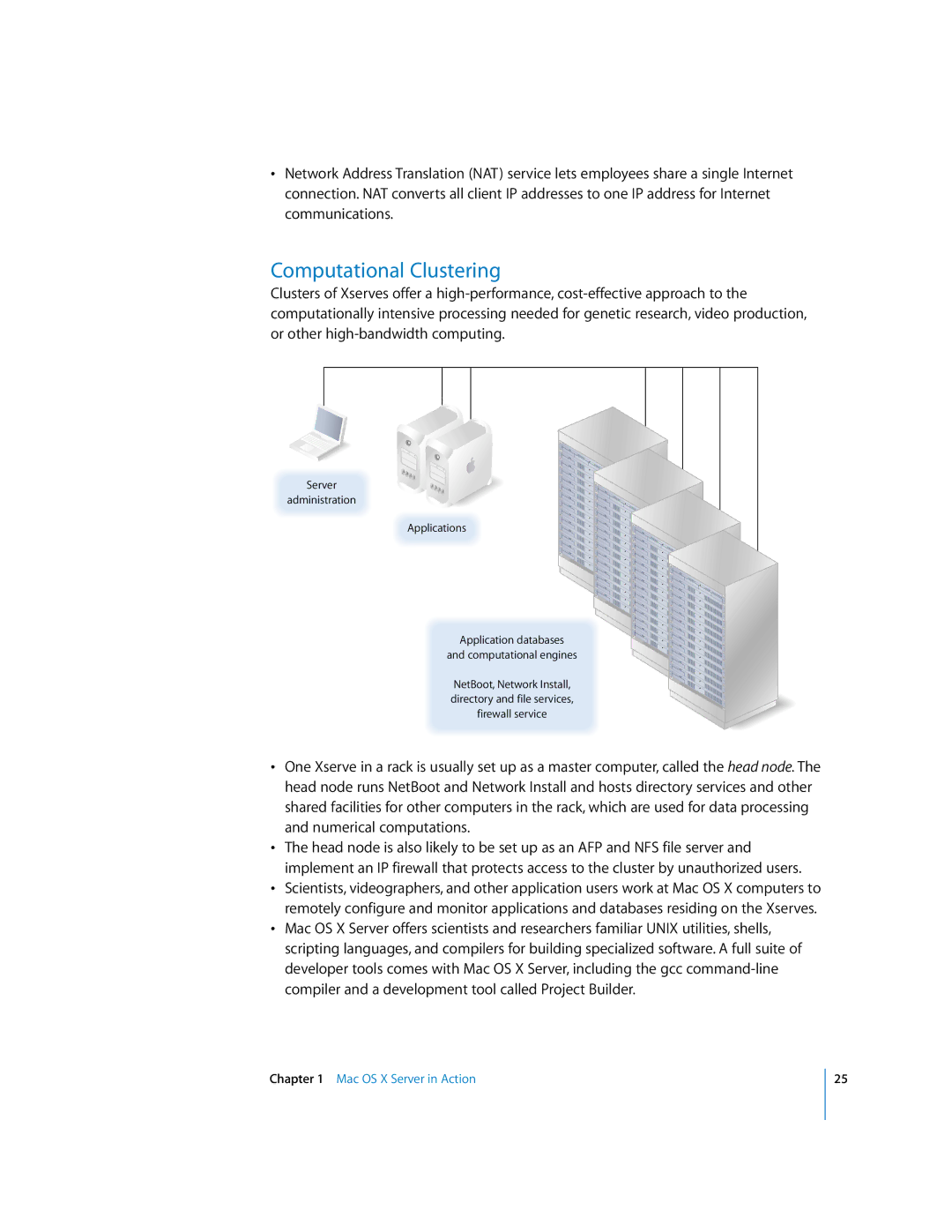
•Network Address Translation (NAT) service lets employees share a single Internet connection. NAT converts all client IP addresses to one IP address for Internet communications.
Computational Clustering
Clusters of Xserves offer a
Server |
administration |
Applications |
Application databases |
and computational engines |
NetBoot, Network Install, |
directory and file services, |
firewall service |
•One Xserve in a rack is usually set up as a master computer, called the head node. The head node runs NetBoot and Network Install and hosts directory services and other shared facilities for other computers in the rack, which are used for data processing and numerical computations.
•The head node is also likely to be set up as an AFP and NFS file server and implement an IP firewall that protects access to the cluster by unauthorized users.
•Scientists, videographers, and other application users work at Mac OS X computers to remotely configure and monitor applications and databases residing on the Xserves.
•Mac OS X Server offers scientists and researchers familiar UNIX utilities, shells, scripting languages, and compilers for building specialized software. A full suite of developer tools comes with Mac OS X Server, including the gcc
Chapter 1 Mac OS X Server in Action
25
